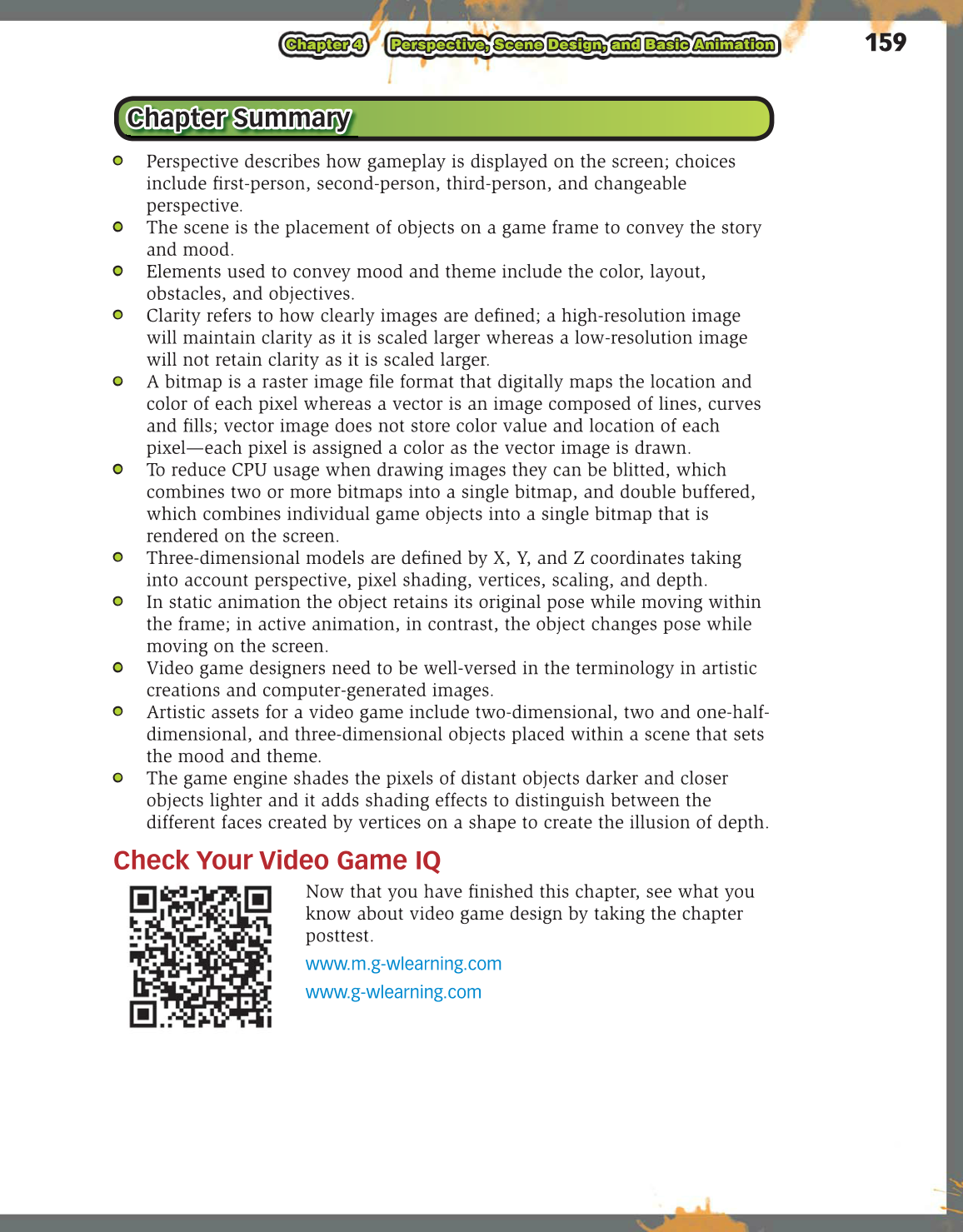159
Chapter 4 Perspective, Scene Design, and Basic Animation
• Perspective describes how gameplay is displayed on the screen; choices
include first-person, second-person, third-person, and changeable
perspective.
• The scene is the placement of objects on a game frame to convey the story
and mood.
• Elements used to convey mood and theme include the color, layout,
obstacles, and objectives.
• Clarity refers to how clearly images are defined; a high-resolution image
will maintain clarity as it is scaled larger whereas a low-resolution image
will not retain clarity as it is scaled larger.
• A bitmap is a raster image file format that digitally maps the location and
color of each pixel whereas a vector is an image composed of lines, curves
and fills; vector image does not store color value and location of each
pixel—each pixel is assigned a color as the vector image is drawn.
• To reduce CPU usage when drawing images they can be blitted, which
combines two or more bitmaps into a single bitmap, and double buffered,
which combines individual game objects into a single bitmap that is
rendered on the screen.
• Three-dimensional models are defined by X, Y, and Z coordinates taking
into account perspective, pixel shading, vertices, scaling, and depth.
• In static animation the object retains its original pose while moving within
the frame; in active animation, in contrast, the object changes pose while
moving on the screen.
• Video game designers need to be well-versed in the terminology in artistic
creations and computer-generated images.
• Artistic assets for a video game include two-dimensional, two and one-half-
dimensional, and three-dimensional objects placed within a scene that sets
the mood and theme.
• The game engine shades the pixels of distant objects darker and closer
objects lighter and it adds shading effects to distinguish between the
different faces created by vertices on a shape to create the illusion of depth.
Check Your Video Game IQ
Now that you have finished this chapter, see what you
know about video game design by taking the chapter
posttest.
www.m.g-wlearning.com
www.g-wlearning.com
Chapter Summary
